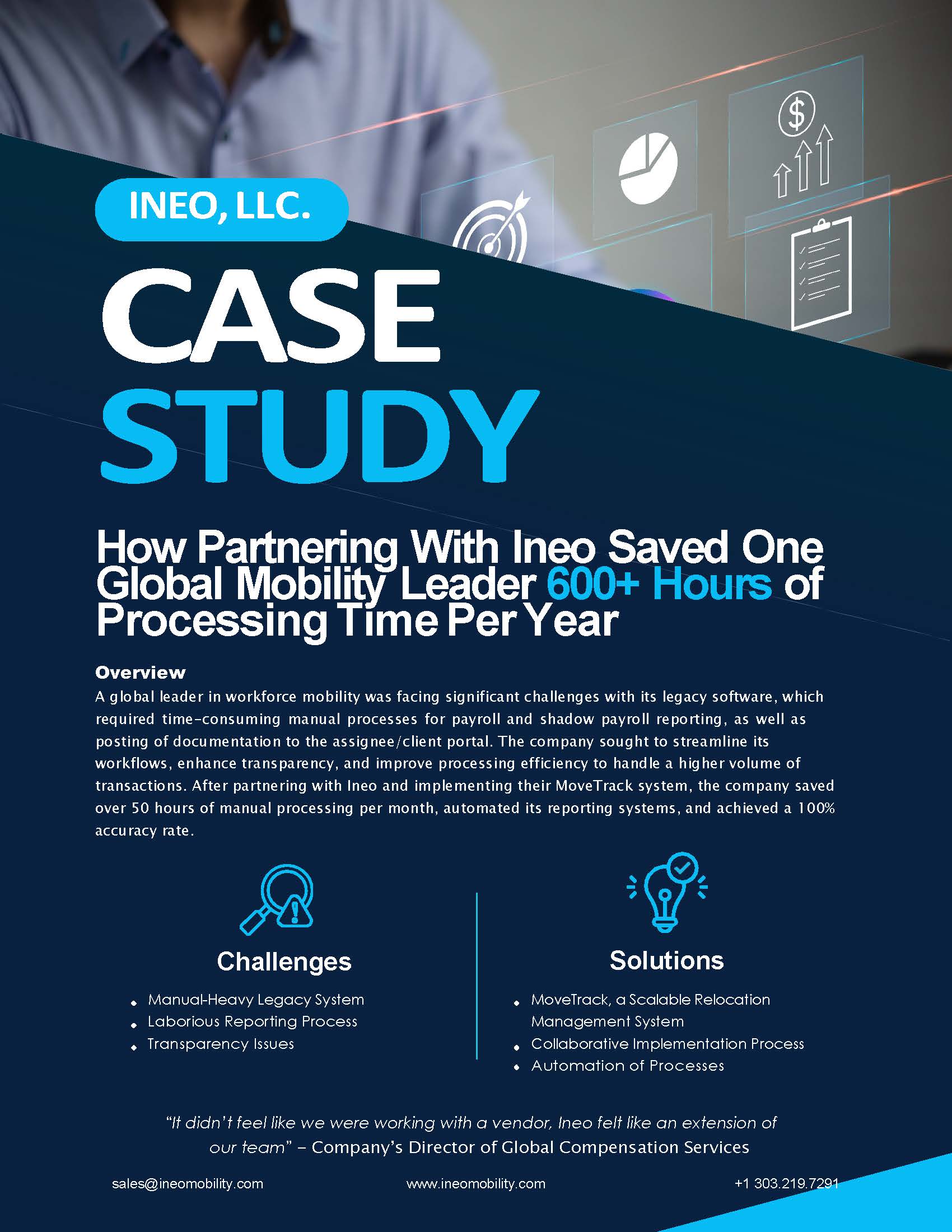3 Things to Know About How Employee Relocation Affects Payroll

For payroll leads and managers, your priority is to capture and report the correct income for each employee. This entails tracking everything from benefits to taxes throughout the year to make sure everything is reported correctly at year-end. When an employee relocates, this adds several layers to the payroll process.
As a global mobility payroll manager, a few relocation-related questions that you need to have the answers to are:
- Do you have visibility into the transferee’s move?
- Which elements of their move are taxable?
- Are you and the employee compliant with local tax requirements/regulations?
In order to ensure that the transfer runs smoothly and that everyone is both tax and reporting compliant, there are a few things to keep in mind about the process.
Here are three things to know about how employee relocation affects payroll.
Relocation benefits
There are certain benefits that may come along with employee relocation that will certainly have an effect on payroll.
When an employee transfers, the company may offer them benefits such as paying for shipment of goods, providing cultural training support, and even home finding assistance, all of which are potentially taxable. Payroll leads need to keep track of what’s included in the transferee’s relocation benefits package in order to determine what is taxable compensation and what is not, in each relevant jurisdiction. This is on top of everything else that payroll manages throughout the year.
In order to efficiently manage this process and seamlessly integrate into the rest of the mobility payroll program, it’s important to have a reliable technology solution in place, especially as it relates to your global mobility program as a whole. For example, Ineo’s TechSuite can assist with the payroll process by compiling a relocated employee’s compensation data and create proper payroll instructions on an automated basis.
A transparent process is key
As a payroll lead, you’re used to processing and reporting numbers. Your process involves a lot of structure and reiteration, especially as it relates to ongoing reporting. But the process around employee relocation calls for additional steps and layers of transparency than you may be used to.
Transferring to a new location, especially when it’s on a global scale, is often a new experience for an employee. There are bound to be new things that the employee is going to see on their pay stubs or on their W-2 at the end of the year when they’re working in a different country, and potentially some things that are new to you, too. It’s important to understand exactly where income, expenses, and taxes are coming from, the reason behind them, and when they need to be reported by. When an employee relocates, there will be multiple sources of taxable income which will likely require an ongoing reporting of expenses. Global mobility payroll managers need to be aware of how these multiple sources will impact payroll and be able to communicate it to the transferee should they have questions or concerns.
Employees will need a resource
When it comes to employee relocation, the onus is ultimately on the individual to understand the terms of their transfer and to ensure their respective tax returns are filed completely and timely at the end of the year. However, as a payroll lead, even though you aren’t responsible for the employee’s taxes, there’s a dual responsibility to understand and convey terms around assignments.
If your company doesn’t have someone whose role is to consult with employees before taking on an assignment, then as a payroll manager, you’ll likely be the first point of contact for employees who have relocated and have questions about their taxes. While the employee is responsible for the filing of their tax returns, you should be able to provide them with information about how their status has impacted payroll.
Oftentimes, if employees aren’t prepped with all of the tax information around their move, they may end up feeling completely shocked by what they see on their W-2 (or equivalent country’s earnings statement) come tax time. For instance, sometimes a transferee may end up with money that doesn’t belong to them. They may think they received a lucrative tax refund, not realizing that the tax was paid by the employer and needs to be paid back to the company.
Ultimately, it’s the responsibility of the employee to understand what needs to be filed and manage their taxes. But it’s still important for payroll leads to understand that they may receive questions and should have sources to point the transferee to for guidance.
For those in charge of managing payroll for their global mobility programs, it’s important to understand how employee relocation affects payroll. Once you understand everything that’s involved and have an efficient payroll tool in place to help you seamlessly manage the process, you can better support your employees who are going on assignments or making moves.
Global Mobility Resources
Learn more about what’s going on at Ineo and insights into the complex world of global mobility from the industry’s top thought leaders and innovators.
Request A Demo
Whether you are new to the world of global mobility or you’ve been in the business for a while, Ineo is here to assist you.
The best way to learn how Ineo’s global mobility software can help your company revolutionize your global mobility program and support your business strategy is to see it in a demo.
Fill out this form to get started today.
Get Started






